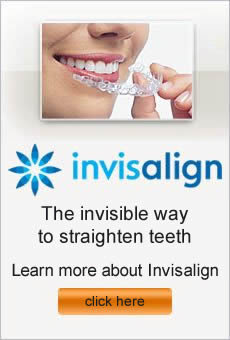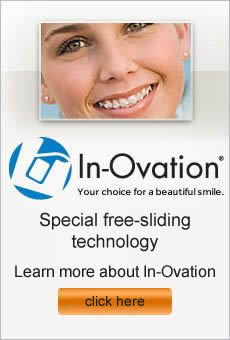One of the best ways to achieve a perfect smile is by wearing braces, but it doesn’t come without a few hassles. Once you see your issues like overcrowded teeth, gaps, bite misalignment, and more are gone, the end result is worth it. In the meantime, look for the bright side of wearing braces!
Follow these guidelines for making your time in braces as successful as possible.
Don’t stress out about the initial part of the process when the orthodontist makes molds of your teeth. Some patients hate this part and worry about gagging. Most people have the same reaction, so don’t feel self-conscious about it. Avoid eating right before your appointment so that food will be less likely to come up. Brush your teeth well before and after the appointment.
Your orthodontist will provide a list of foods that you shouldn’t eat while you’re in braces. Remember that you won’t be without your popcorn or favorite candy forever; it’ll be worth the wait when you get to eat those treats again using your perfectly straight teeth! Look at the restrictions as a chance to try different foods and maybe even eat a little healthier.
Speaking of foods, indulge in your favorite cold treats after your appointments to get your braces adjusted or tightened. Sure, it’s uncomfortable, but having a yummy milkshake or ice cream cone will help ease the pain. Braces provide a great excuse for a trip to the ice cream shop.
If fashion is your thing, have fun with the elastics that go with your braces if your treatment involves them. Orthodontists offer a variety of color choices, so express your style when selecting your elastics. Every month can be a new adventure for your smile.
It may be a bummer to wear braces for a couple of years, but you can improve the experience by making the most of it. Keep your mind focused on how happy you’ll be in the end.

Here at Dr. Mehdi Fotovat’s practice, our team believes that giving is caring. That’s why we invite patients, parents, and the entire community to enter our Give & Get Sweepstakes! Do good and feel good all at the same time. Everyone’s invited to have the chance of winning a…
$500 Shopping Spree & a $500 Donation to Your Favorite Charity!
Entering is easy. Simply click the link below and fill out the entry form for your chance to win. And that’s not all- share the sweepstakes with friends on Facebook and you’ll receive 3 bonus entries for every friend that enters through your link.
Click HERE to ENTER!

The most common treatment method for straightening teeth and correcting bites has been braces for many years. However, new types of braces have been developed as technology has advanced. One example is lingual braces, sometimes also referred to as incognito braces.
Like traditional braces, lingual braces are made of metal. There is one major difference from braces that have been available for a long time; lingual braces are fitted on the inside of your teeth instead of the outside. This provides the benefits of braces without the embarrassment of visible metal braces.
Many patients are candidates for lingual braces, although they might be considered most popular among adults who especially want to hide the fact that they are undergoing orthodontic treatment at a later age. A consultation with an orthodontist is necessary to determine if you are a good candidate, or if a different option might be more effective.
Braces that require wires and brackets on your teeth have a reputation for causing discomfort. Lingual braces are no different, and in fact, they tend to be a bit more uncomfortable due to their placement on the inside of your teeth. It feels somewhat unnatural having the metal inside your mouth where your tongue brushes against it often. For the first week or so, your tongue may feel a little sore as you get used to it having to share space with the braces.
Talking and eating may be awkward after you initially get lingual braces. A slight lisp or whistling sound is common when speaking at first, but disappears as you grow accustomed to the braces. The same goes for eating, as you’ll get used to how the braces fit in your mouth.
Because of their location, lingual braces are difficult to clean. Food tends to get stuck in the braces and it’s hard to remove, especially since you can’t see behind your teeth well. It’s hard to know how dirty or clean your braces and teeth are. Regular brushing and flossing is key to maintaining good oral health while wearing lingual braces.
If achieving the perfect smile while hiding treatment is important to you, talk to an orthodontist about the possibility of lingual braces.
Wearing braces on your teeth is a step toward improving your appearance and self-esteem for the rest of your life. A straight, appealing smile is the goal, but you must care for your braces and follow your orthodontist’s instructions during treatment to achieve that goal.
Follow these tips for a successful braces journey.
Not surprisingly, you must properly and consistently perform oral hygiene tasks. Your teeth are even more susceptible to plaque buildup and bacteria attacks when you’re wearing braces. Food can easily become trapped in the wires and brackets, and it can be difficult to remove debris. Try to carry a soft-bristled toothbrush with you so that you can stop by the bathroom after eating to clean your braces and teeth. Always rinse thoroughly with water to dislodge food, and brush gently from various angles.
Even though it can be tricky, don’t neglect flossing. Thread the floss between your teeth and wires, and gently work the floss between the braces and teeth. Try using a threader available at drugstores to insert the floss more easily. Your orthodontist may also recommend rinsing with mouthwash daily to fight bacteria.
Always stick to the diet that your orthodontist provides. Do not eat the foods that are known to damage braces, such as popcorn or hard candies or sticky caramel. Items on the list are common culprits for breaking your brackets or wires. It’s best to consider every food before you eat it so that you avoid items that may damage your braces. In some cases, you can simply cut the food into smaller pieces and still be able to eat it.
You may also be warned against consuming too many starchy or sugary foods and drinks, which promote decay and gum disease. Also, break potentially harmful habits like chewing ice or knawing on pencils. Another way to protect your braces is to wear a mouth guard when engaging in sports or other physical activities. A customized mouth guard is the best option for protecting your smile.
Following these guidelines will help your teeth remain clean and healthy while undergoing treatment, so that your smile is in tip-top shape when the braces are removed.
Getting your braces off and revealing your brand new smile is an exciting prospect. In order to keep those perfectly aligned teeth, you will be required to utilize some form of orthodontic retainer.
When braces are removed, the teeth need to settle into the soft tissue and jawbone. A retainer helps keep your teeth from shifting to protect your orthodontic results over a lifetime. A custom-made retainer will hold the position of your teeth both immediately following your orthodontic treatment, and over time as aging naturally causes your teeth to shift.
Hawley retainers are the most common type of removable retainer. This retainer consists of a thick plastic body that covers the roof of your mouth or lies on the tongue side of your lower teeth. Clasps grasp selected teeth to anchor the retainer and “bow” wire across the front of your teeth. Hawley retainers are both removable and adjustable.
Another type of removable retainer is an Essex retainer. These clear plastic retainers are made with a cast to fit your teeth and are similar to Invisalign aligners. This type of retainer is less noticeable, but also more fragile and non-adjustable.
The success of any removable retainer depends largely on proper and consistent use as advised by your orthodontist. Your orthodontist may suggest a more permanent option. Fixed retainers are attached directly to the backside of your front teeth. They cannot be removed except by a dental professional. One advantage of fixed or “bonded” retainers is that you do not have to worry about them being lost, and they are always in place to do their job. Fixed retainers may be left in place for the remainder of your life.
Consult with Sherman Oaks CA orthodontist, Dr. Fotovat l to determine the most effective type of retainer for your orthodontic needs.




